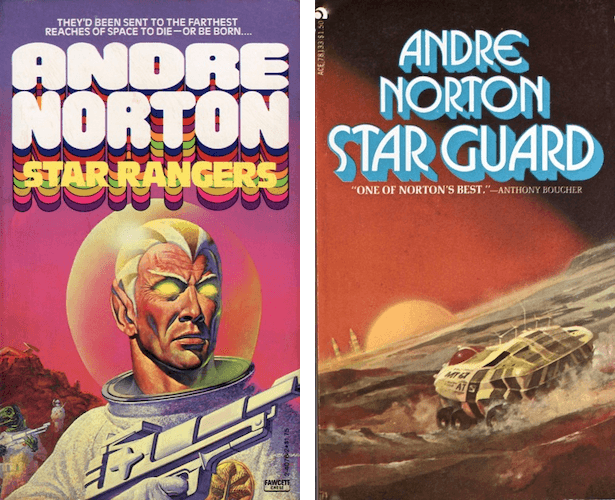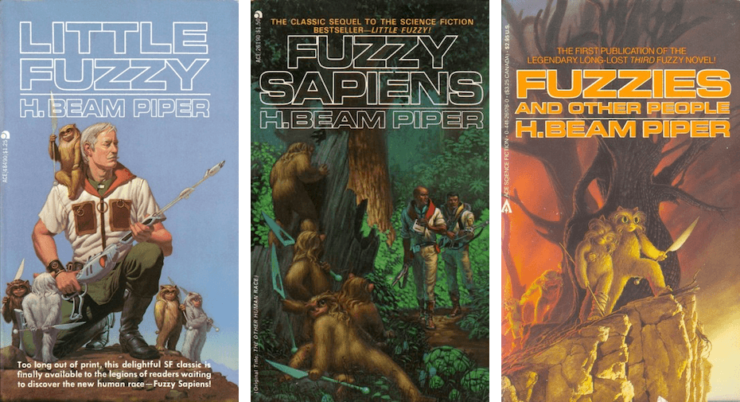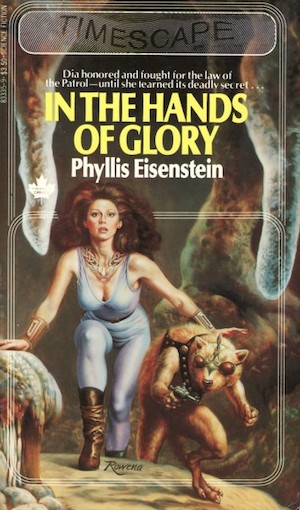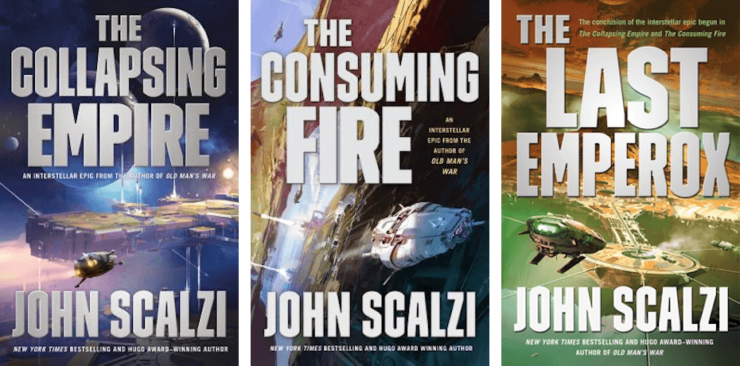One might think that if an organization/state/empire is big, it is too big to fail. Certainly, facing off against this kind of gargantuan foe always feels impossible in the here and now. But as we know… the bigger they are, the harder they fall.
This goes for star empires as well. Here are five empires that looked invincible and weren’t.
Andre Norton’s Central Control/First Galactic Empire

[Appears in at least two novels: Star Rangers (1953) and Star Guard (1955)]
Central Control managed to assimilate Terran barbarians in the 5th Millennium by steering worthy Terrans into appropriate occupations. When the Terrans displaced the races that formerly controlled the stars, Central prevailed: only rulers changed, but the empire carried on.
Until the 9th Millennium, that is, when the same historical forces that had destroyed previous empires brought the First Galactic Empire low. Regional governors sought power for themselves, bandits ran amok, and the Scout ship Starfire was dispatched on an errand straight out of Xenophon.
***
H. Beam Piper’s Federation

[Includes nine novels published over a span of thirty-two years: Uller Uprising (1952), Four-Day Planet (1961), Little Fuzzy (1962), The Cosmic Computer (1963), Space Viking (1963), The Other Human Race (1964, later released as Fuzzy Sapiens), Federation (1981), Empire (1981), and Fuzzies and Other People (1984)]
Forged in the aftermath of a global war that left Earth’s Northern Hemisphere in ruins, the Federation united first Earth, then the Solar System, and finally the stars across a vast volume of space. Although humans were not the only intelligent species in the region, they were by far the most technologically advanced. Thus, it was trivial for the Federation to dominate. Indeed, it had no external enemies (which didn’t stop it from constructing space fleets and weapons able to depopulate continents).
Unfortunately for the Federation, the novels were written by a staunch pessimist who didn’t believe any human organization was eternal. According to Piper, a major cause of the Federation’s downfall was economic: local economic development disrupted interstellar trade, which in turn led to strife, open conflict, and secession as various regions tried to shore up their economies. Ultimately, civil wars left the old Federation in ruins and too weak to resist predators like the Space Vikings.
***
Phyllis Eisenstein’s Stellar Federation

[In the Hands of Glory (1981)]
The Federation ruled over a century of peace—peace enforced by the Patrol. By pooling the resources of many worlds, the Federation could utilize the assets of its member planets to deal with any crisis that threatened a fellow member. At least in theory. Membership in the Congress of Planets gave all Federation planets a voice in shaping policy. Also in theory.
In practice, the Federation was defeated by something against which its resources were insufficient: the scale of a galaxy. Distances were too great and worlds too isolated for Federation response to be timely. Once the inherent intractability of governing a polity so vast became apparent, the Federation disbanded, leaving its former members to navigate the resulting chaos as best they could.
***
Walter Jon Williams’ Praxis Series

[Includes: The Praxis (2002), The Sundering (2003), Conventions of War (2005), The Accidental War (2018), Fleet Elements (2020)]
The alien Shaa conquered every system within a vast wormhole network. Because they enjoyed a considerable technological advantage over every other intelligent species, there was little other species could do aside from surrendering or dying horribly in futile resistance. Once crushed, each new conquest was reshaped into something pleasing to the one true Shaa way of doing things.
In fact, conquest and assimilation proved so routine that after millennia of success, the Shaa succumbed to species-wide ennui. Uninterested in maintaining their numbers, the Shaa population imploded. By the time of 2002’s The Praxis, there is but one Shaa left. Without the Shaa to guide them, what are the subject races to do? Why, turn on each other with fleets armed with horrific weapons and a total absence of any practical experience of war between equal foes…
***
John Scalzi’s The Interdependency

[Includes: The Collapsing Empire (2017), The Consuming Fire (2018) and The Last Emperox (2020)]
The Interdependency is based on cheap interstellar trade courtesy of the Flow, an enigmatic phenomena humans do not need to understand to pragmatically exploit. Trade is governed by economic guidelines that ensure that no single system is capable of surviving without goods and services imported from other systems. However individual worlds may feel about the interlocking network of monopolies that is the Interdependency, a declaration of independence is indistinguishable from suicide.
It’s just too bad that one of the core assumptions about the Flow—that it is stable on very long time scales—is wrong. The Flow is not stable and trade will soon become impossible. Whether worlds want independence or not—whether they can survive it or not—they will soon have it forced on them. Sweeping reforms are necessary. Too bad the Interdependency was designed to make reform well-nigh impossible.
***
No doubt I have missed many examples necessary to a proper foundation of this particular subgenre of speculative fiction. Please mention them in the comments below.
In the words of Wikipedia editor TexasAndroid, prolific book reviewer and perennial Darwin Award nominee James Davis Nicoll is of “questionable notability.” His work has appeared in Publishers Weekly and Romantic Times as well as on his own websites, James Nicoll Reviews and Young People Read Old SFF(where he is assisted by editor Karen Lofstrom and web person Adrienne L. Travis). He is a four-time finalist for the Best Fan Writer Hugo Award and is surprisingly flammable.










